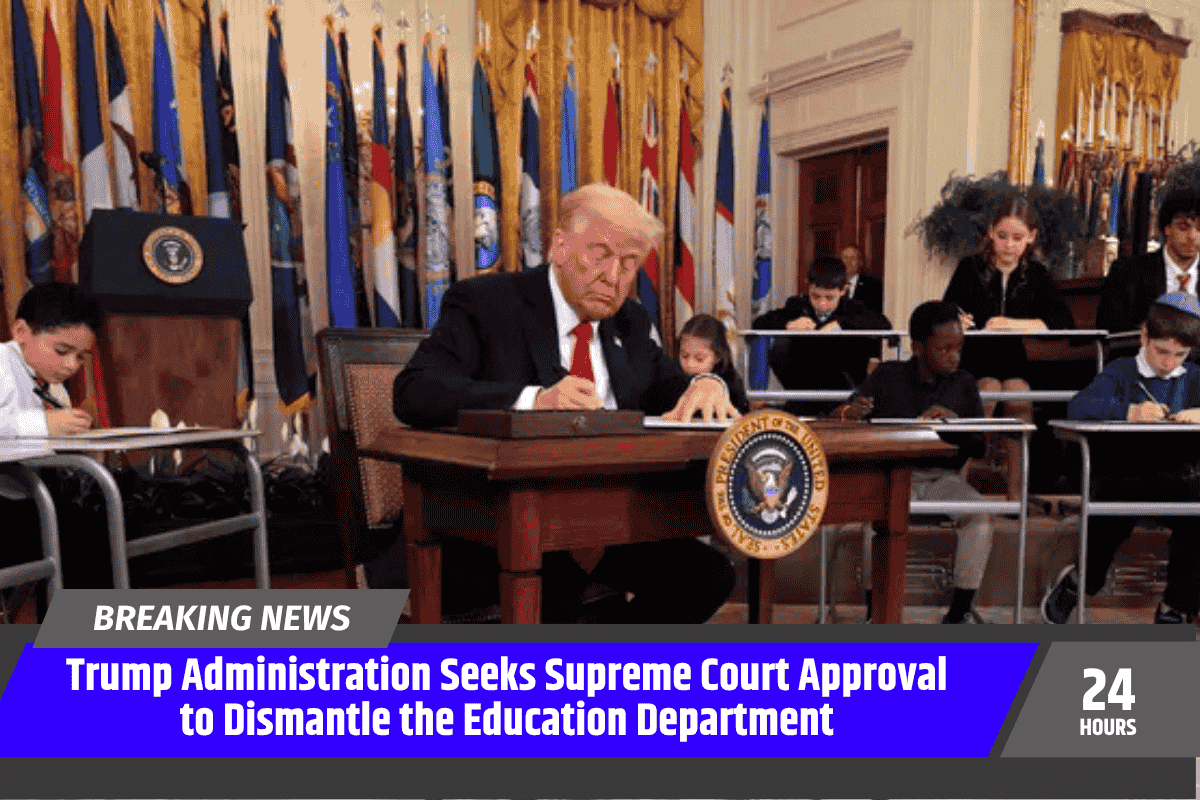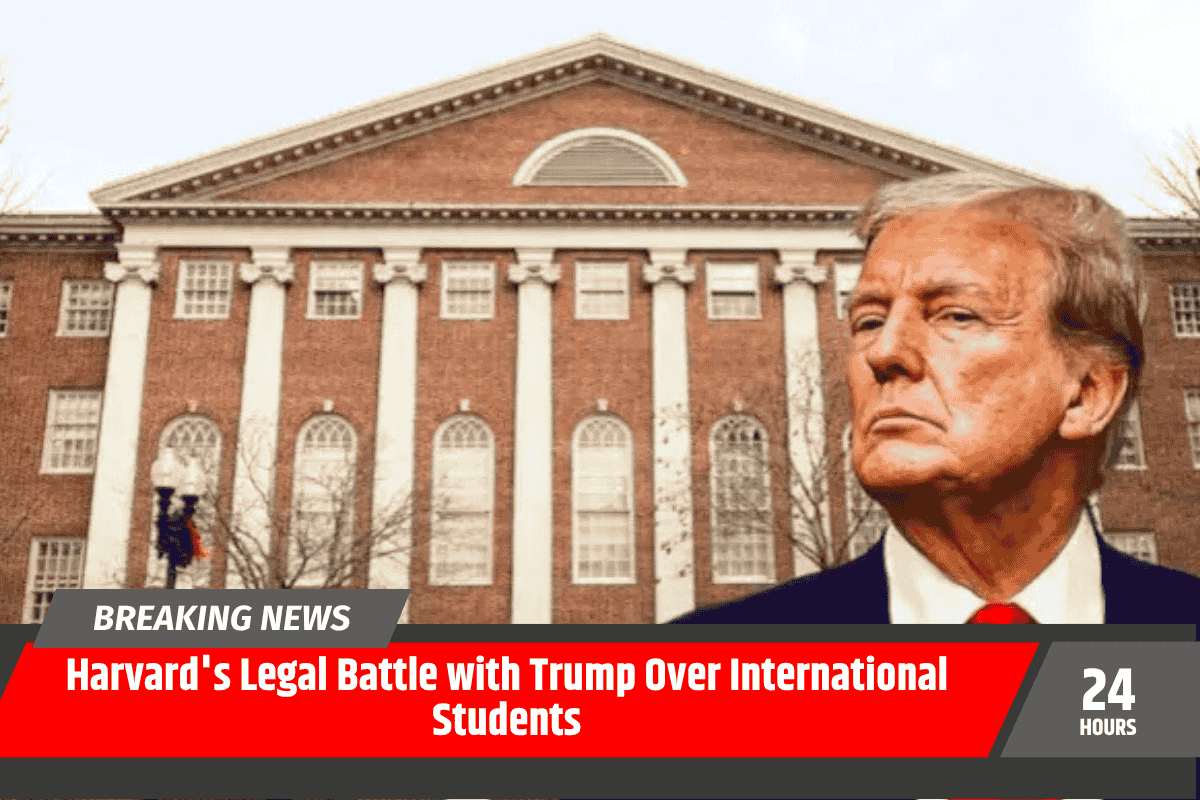On June 6, the Trump administration made an emergency appeal to the U.S. Supreme Court, asking the court to lift a lower court’s order that blocked efforts to reduce the size of the Education Department and lay off hundreds of its employees.
President Donald Trump has long promised to cut the department, arguing that school policy should be managed by individual states rather than the federal government.
The Administration’s Push to Cut the Education Department
The administration’s goal is to fulfill Trump’s campaign promise of shrinking the Education Department, which could involve cutting more than 1,300 jobs. The workers were placed on administrative leave in March, and their salaries were set to end on June 9.
The appeal seeks to lift a block placed by lower courts while the issue is still under legal challenge by Democratic-led states, school districts, and teachers’ unions.
Solicitor General John Sauer argued that the Constitution grants the Executive Branch the authority to make decisions about staffing and the functioning of government agencies. He claimed that district courts should not be involved in these decisions.
Legal Challenges and Court Rulings
The lower courts have sided against the administration’s plan. U.S. District Judge Myong Joun ruled that firing more than 1,300 workers would severely hinder the Education Department’s ability to perform its statutory functions.
Judge Joun stated that such a significant restructuring could not happen without approval from Congress, which established the department in 1979.
The 1st U.S. Circuit Court of Appeals supported this decision, highlighting the potential harm to the Education Department’s ability to function effectively. The court found no evidence that the administration’s plans would not have a disabling impact on federally required programs and services.
Trump’s Executive Order and Staff Reductions
In March 2025, Trump signed an executive order instructing Education Secretary Linda McMahon to oversee the closure of the Education Department.
As part of this directive, McMahon announced that about half of the agency’s workforce—approximately 2,000 employees—would be laid off through mass layoffs and voluntary buyouts.
This would reduce the Education Department’s staff from 4,133 workers to 2,183.
The Trump administration also planned to shift certain Education Department functions to other agencies. For instance, the Small Business Administration would take over handling student loans, while special education services would be transferred to the U.S. Department of Health and Human Services.
Legal Obstacles and Ongoing Litigation
On May 22, Judge Joun issued an order blocking the administration’s actions and requiring the reinstatement of fired employees. As of June 5, none of the fired workers had been rehired, and the administration had not presented a plan for bringing them back to their positions.
The administration argues that requiring the rehiring of workers during the ongoing litigation causes greater harm to the government than any potential harm from a diminished Education Department.
The Justice Department has urged the Supreme Court to act quickly to allow the layoffs to proceed, given the upcoming June 9 district court hearing to assess the department’s compliance with the order.
Education Department’s Legal Obligations
Despite the proposed changes, the Education Department remains legally obligated to administer critical programs under the Higher Education Act of 1965.
These programs include student loan services, grants for low-income schools, and ensuring that schools receiving federal funding do not discriminate against students.
Even if the Education Department is restructured or its functions moved to other agencies, these obligations would still need to be fulfilled, and such changes would require an act of Congress.
The Education Department also ensures that students and teachers with disabilities receive fair treatment and that the federal government maintains accountability for the education of future generations.
These essential services underscore the importance of keeping the department functional, no matter the political debate about its size and scope.
As the Trump administration continues to push for the reduction and restructuring of the Education Department, its efforts are facing strong legal opposition.
While the administration argues for executive authority over staffing decisions, lower courts have ruled that such a significant restructuring must involve congressional approval.
The outcome of this ongoing legal battle will have significant implications for the future of the Education Department and its ability to carry out its vital functions in the U.S. education system.








If you let this happen people and children who really need the help will not get it meaning you preach you want to make America grate again but to take steps to contradict yourself what you are doing is making your wallet grate again you don’t care about the people or children you care about you while we the people sit and worry about our next meal if our children are safe and educated and provided a healthy meal. That is enough to fill them up.where the money is going to come from for all the expenses, we have.
You get to rest easy you get to say okay. My lifestyle means more im going out on a limb to say 67%of America households barely make it. Have no money to save even if they wanted to stop cutting things people need. education should never be at the top of the list understand that you can’t start at the top you must start with the bottom start with a mother with 5 special needs kids who can have a job and has Noone to turn to start with the poor un educated people who need help cause your only as good as your weakest link so help stop hurting us so you feel better at night stop playing games with us the people who need you to come though for us